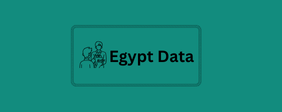The latest versions of Google Chrome and Mozilla Firefox have changed the process of requesting permissions for web pushes. The updates were designed to “make the user’s journey through a site that uses pushes seamless.” In simpler terms, to be less annoying to those who do not need to subscribe to pushes. We explain what this means for site owners and what to do about it.
Google Chrome. In version 80 of the browser for desktop and Android, silent subscription requests.
Will primarily appear for users who usually block such requests, and secondarily – on sites with a very low number of push subscriptions. This is what silent requests look like in Chrome, a small icon in the address bar:
Mozilla Firefox
In the browser version 72 from January 7, 2020, desktop notifications.
Will no longer be shown to the user if he has not interacted with the site before the request. In this case, interaction means that the user tapped or clicked on an element or pressed a key on the keyboard.
It has become more difficult for stores to replenish their cambodia phone number data subscriber base. Despite the fact that push notifications as
a marketing channel sometimes work very well. Even at the dawn of the technology, our clients used web push newsletters, which gave a 10% CTR and 4% conversion into purchases from newsletters.
Create your notification: text, banner, buttons. Tell about promotions and products, collect hot traffic to the site. Sending to browsers and smartphones. Analytics for each newsletter.
But browsers are easy to understand: an absolute minority of users subscribe to push newsletters.
While the popularity of the technology pushes every second site to attach them to themselves. The result is that most visitors see pop-ups they do not need.
According to Firefox research
At the release of the function, about 99% of form impressions ended with push blocking, and of the remaining 1%, slightly less than half were blocked by users manually. A month after the release of browser version 63, out of 1.45 billion form impressions, only 23.7 million ended in subscription. That is, there were 60 blockings per subscription.
Shops should take into account that the push notification Android users will change how marketers subscription window is far from the only pop-up window. Many have an online consultant window and an email newsletter subscription form enabled. In total, it turns out to be too much.
How shops can improve user experience
One option for keeping the subscription form visible is to display a custom india data one that works around the innovations. Like here:
However, this approach does not solve another problem: site visitors will still be forced to subscribe to push notifications separately, then to email. These are two actions instead of one.

